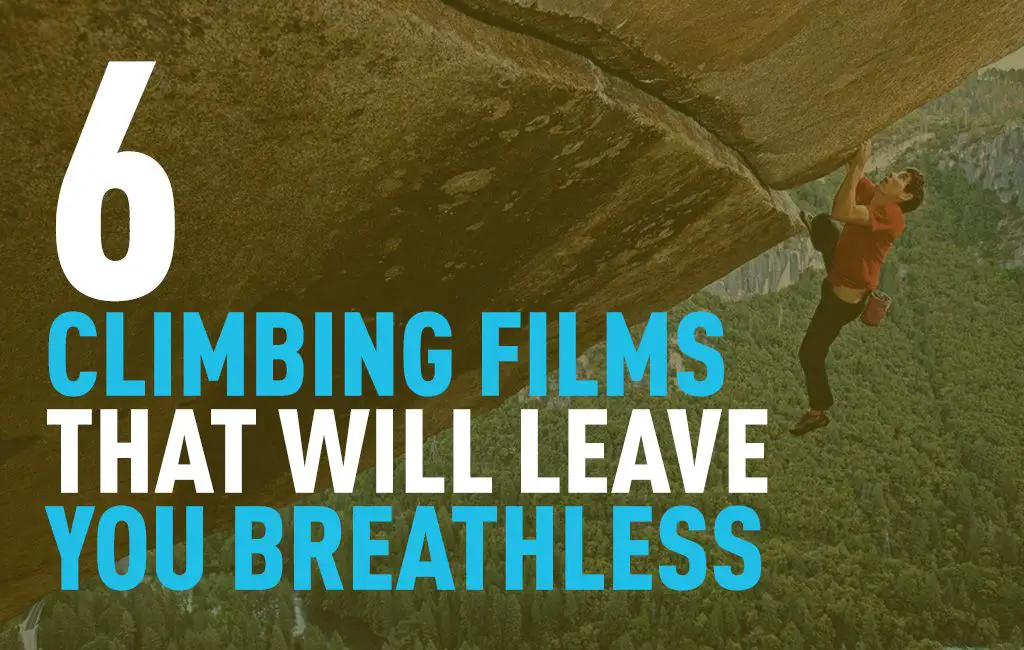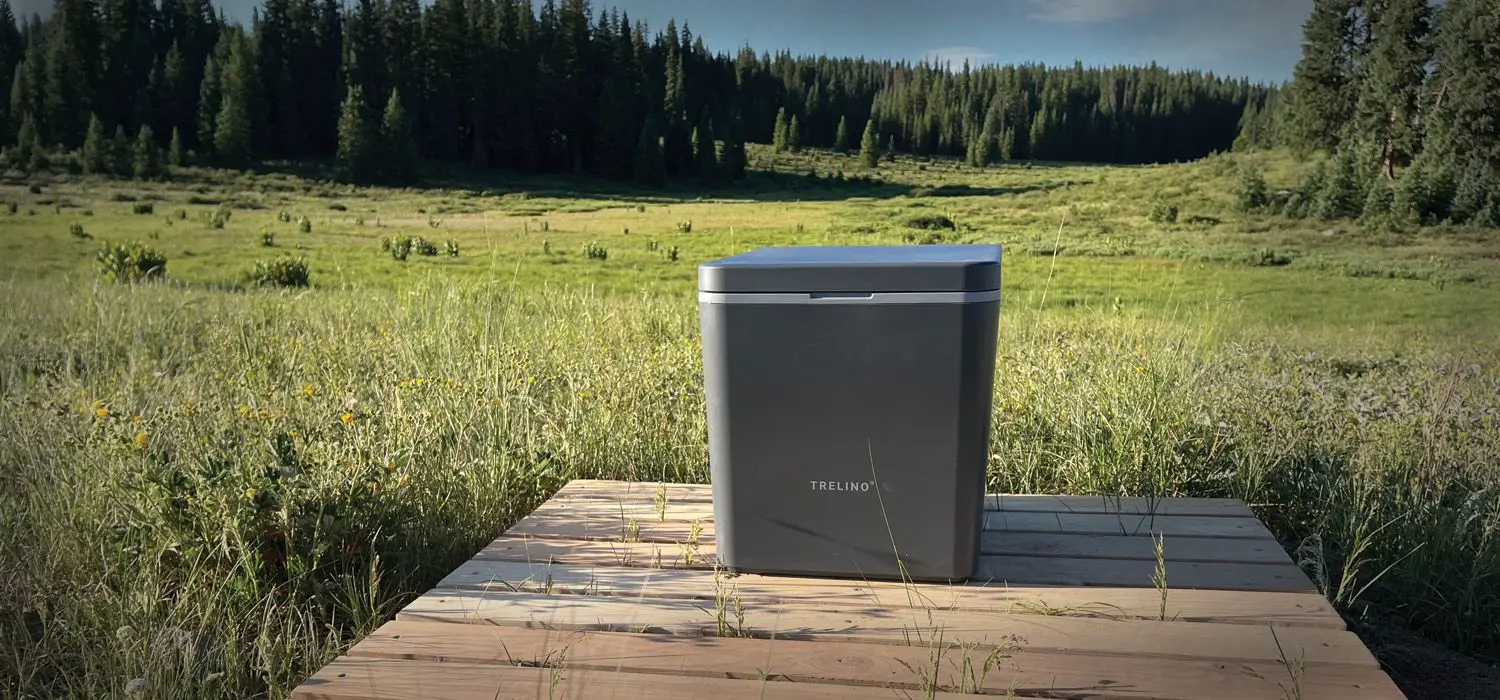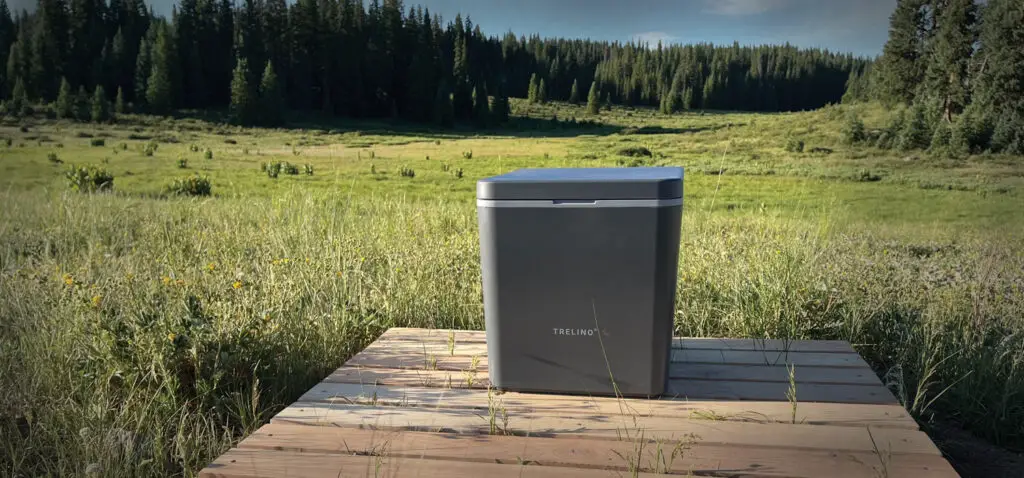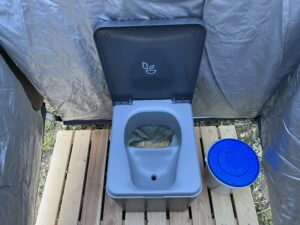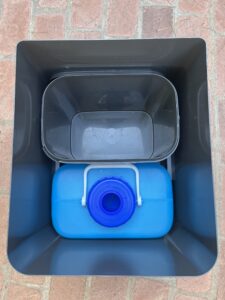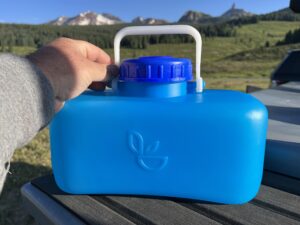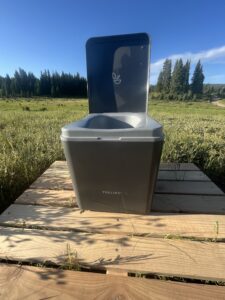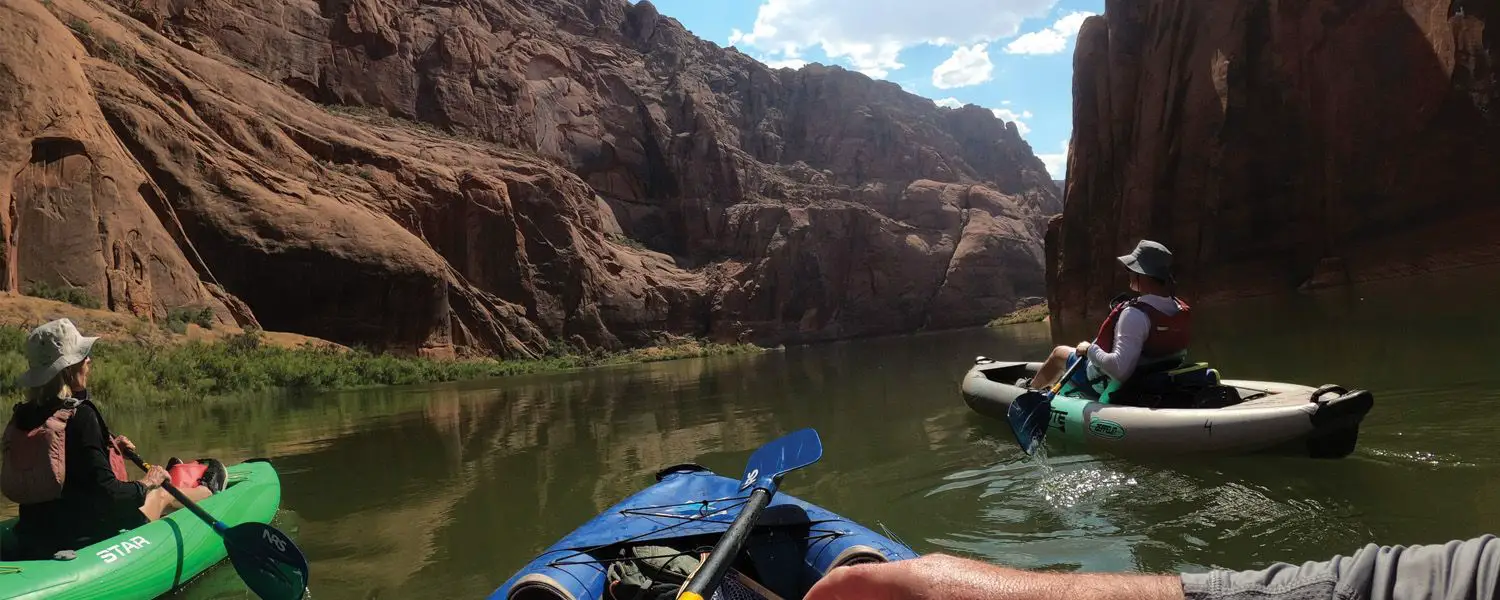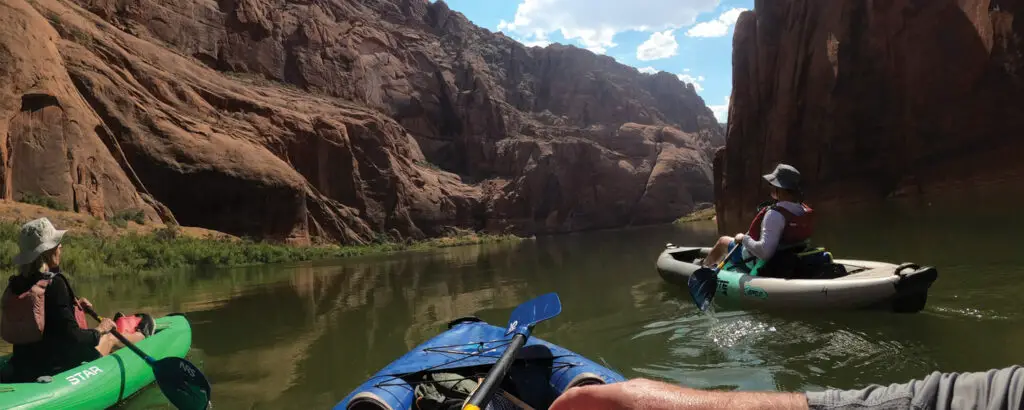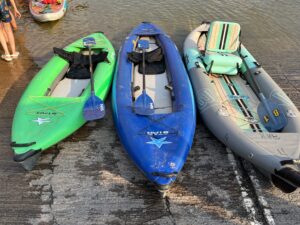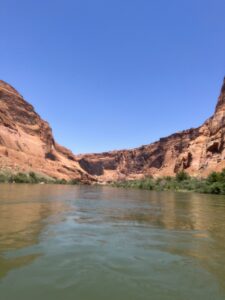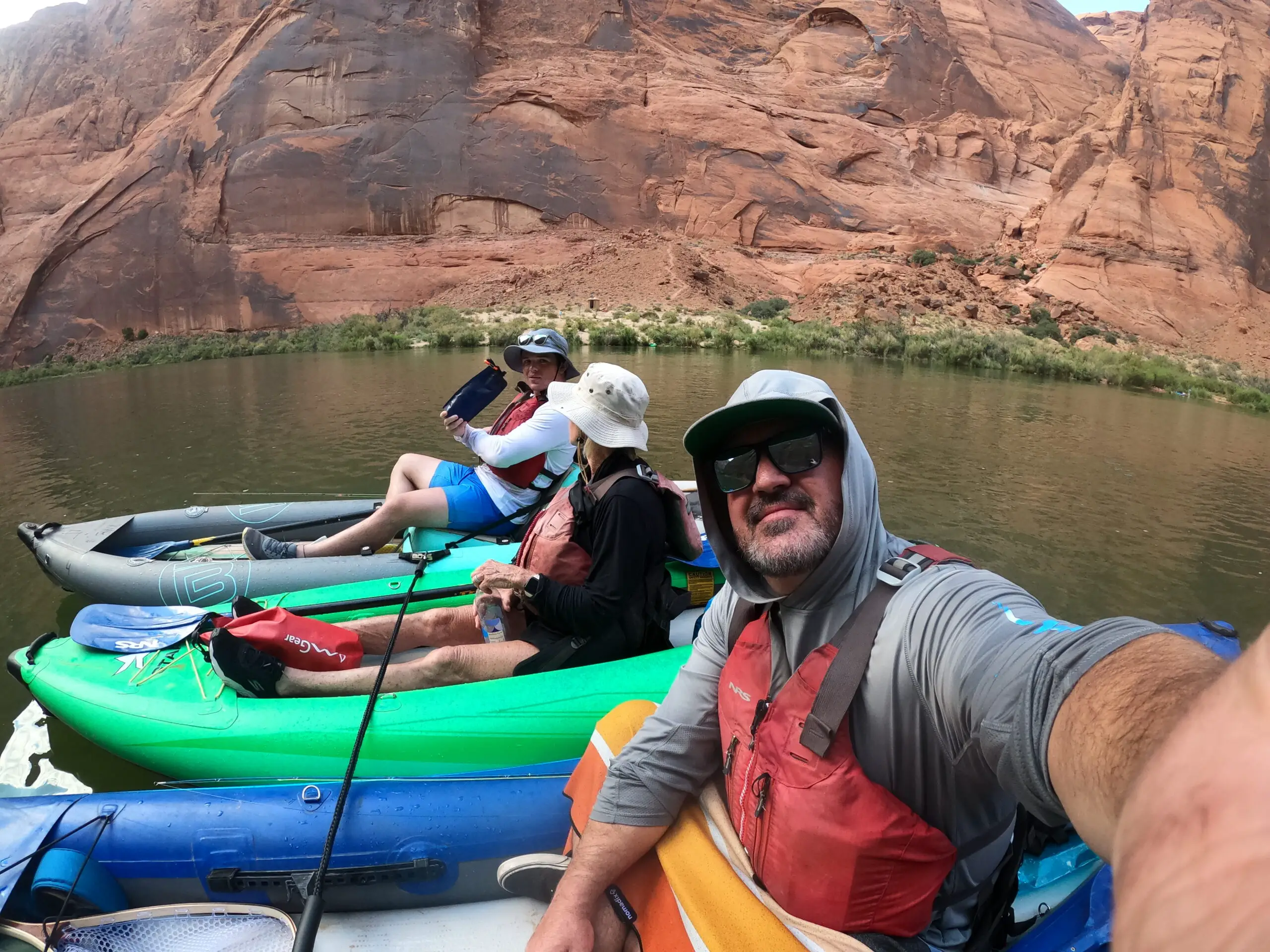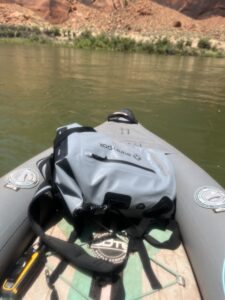On Top of the World: 6 Mountain Climbing Movies That Will Leave You Breathless

Mountain climbing movies have a unique ability to transport us to breathtaking heights, immersing us in the world of daring adventurers as they conquer monumental peaks. These films capture the indomitable human spirit, pushing the boundaries of physical and mental endurance in the face of treacherous terrain. From the safety of our seats, we can experience the thrill, danger, and triumph of mountaineering without ever leaving home.
In this article, we embark on a cinematic journey through six gripping mountain climbing movies that will leave viewers breathless and inspired. Each movie explores the challenges and triumphs of climbers, taking us on an adrenaline-fueled ride as they scale majestic summits and confront their deepest fears. These films not only showcase stunning visuals of awe-inspiring landscapes but also delve into the human psyche, revealing the resilience, determination, and vulnerability of those who dare to conquer nature’s greatest heights.
From nail-biting suspense to heartwarming camaraderie, these mountain climbing movies offer a captivating blend of adventure, emotion, and spectacle. Whether you’re a seasoned mountaineer or an armchair adventurer, these movies will leave an indelible mark on your soul and ignite the dormant spark of wanderlust within.
Join us as we delve into the world of mountain climbing movies, where ordinary people become extraordinary heroes, and where the pursuit of a summit becomes a metaphor for the triumph of the human spirit. Get ready to be transported to the edge of precipitous cliffs, feel the biting cold of thin air, and witness the raw power of nature. These six mountain climbing movies are a testament to the indescribable beauty and harrowing challenges of the world’s tallest peaks, reminding us that sometimes, the most incredible journeys are those that take us to the top of the world.
So strap on your metaphorical climbing gear, fasten your seatbelts, and prepare for an exhilarating cinematic adventure as we explore these six mountain climbing movies that will undoubtedly leave you breathless.
Everest
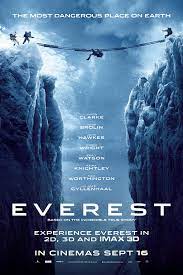 “Everest” is an epic and gripping hiking movie that chronicles the real-life tragedy that unfolded on Mount Everest in 1996. Directed by Baltasar Kormákur, the film brings the harrowing story to life, depicting the awe-inspiring beauty, the unforgiving challenges, and the indomitable human spirit that characterize the world’s highest peak.
“Everest” is an epic and gripping hiking movie that chronicles the real-life tragedy that unfolded on Mount Everest in 1996. Directed by Baltasar Kormákur, the film brings the harrowing story to life, depicting the awe-inspiring beauty, the unforgiving challenges, and the indomitable human spirit that characterize the world’s highest peak.
The movie introduces us to a diverse group of climbers from different parts of the world, each with their own motivations and aspirations to conquer Mount Everest. As they embark on their journey, the film takes viewers on a visually stunning adventure, showcasing the breathtaking landscapes, towering peaks, and treacherous conditions that define the Everest experience.
“Everest” depicts the physical and mental challenges faced by the climbers as they ascend to the summit. It captures the harsh realities of high-altitude mountaineering, including extreme weather conditions, oxygen deprivation, and the ever-present risks of avalanches and crevasses. Through meticulous attention to detail, the film immerses viewers in the treacherous environment and the grueling struggle for survival.
The movie delves into the personal stories and relationships of the climbers, highlighting their camaraderie, determination, and sacrifices. It explores the psychological toll of pushing oneself to the limits and the difficult choices that must be made in life-or-death situations. The film’s powerful performances and emotional depth allow viewers to connect with the characters and feel the weight of their extraordinary circumstances.
“Everest” also examines the ethical dilemmas that arise in extreme mountaineering. It raises questions about the commercialization of Everest and the potential risks associated with crowded climbing seasons. The film prompts viewers to reflect on the balance between personal ambitions and the safety of oneself and others in extreme environments.
Beyond the individual narratives, “Everest” pays homage to the mountain itself, portraying Mount Everest as a force of nature that demands both respect and humility. The film captures the beauty and majesty of the mountain, serving as a reminder of the awe-inspiring power of nature and the human desire to conquer and explore it.
In summary, “Everest” is a riveting hiking movie that immerses viewers in the heart-pounding drama and extraordinary challenges of climbing Mount Everest. It showcases the physical and emotional struggles faced by climbers and explores the complex dynamics of human relationships in extreme conditions. The film prompts contemplation about the ethics of mountaineering and emphasizes the need for reverence and caution in the face of nature’s grandeur.
Key Takeaways:
- “Everest” depicts the real-life tragedy that unfolded on Mount Everest in 1996.
- The film captures the awe-inspiring beauty and unforgiving challenges of climbing the world’s highest peak.
- It explores the personal stories, relationships, and sacrifices of the climbers.
- “Everest” raises ethical questions about the commercialization and risks of extreme mountaineering.
- The movie serves as a reminder of the power of nature and the need for caution and respect in the face of the world’s tallest mountain.
Rent or Buy “Everest” via Prime Video
Free Solo
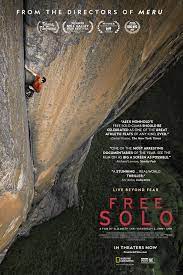 The second pick in our mountain climbing movies list is “Free Solo”. “Free Solo” is an awe-inspiring and adrenaline-pumping hiking movie that documents the incredible journey of rock climber Alex Honnold as he attempts to free solo El Capitan, a 3,000-foot granite wall in Yosemite National Park. Directed by Jimmy Chin and Elizabeth Chai Vasarhelyi, the film provides a captivating and intimate look into Honnold’s fearless pursuit of the seemingly impossible.
The second pick in our mountain climbing movies list is “Free Solo”. “Free Solo” is an awe-inspiring and adrenaline-pumping hiking movie that documents the incredible journey of rock climber Alex Honnold as he attempts to free solo El Capitan, a 3,000-foot granite wall in Yosemite National Park. Directed by Jimmy Chin and Elizabeth Chai Vasarhelyi, the film provides a captivating and intimate look into Honnold’s fearless pursuit of the seemingly impossible.
The movie introduces viewers to Alex Honnold, a legendary free solo climber known for his extraordinary abilities and his willingness to tackle unimaginable challenges without the use of ropes or safety equipment. As the film unfolds, it follows Honnold’s meticulous preparations and training for his historic ascent of El Capitan, a feat that has never been accomplished before.
“Free Solo” offers a gripping and heart-stopping portrayal of Honnold’s journey. The film captures the breathtaking beauty of Yosemite National Park and the sheer magnitude of El Capitan, while also showcasing the intense physical and mental demands of free solo climbing. Through stunning cinematography and intimate storytelling, viewers are placed right alongside Honnold as he navigates the intricate movements and high-stakes risks of his chosen path.
The documentary explores not only the physical aspect of free solo climbing but also the psychological and emotional toll it takes on Honnold. It delves into his motivations, fears, and the constant battle between his passion for mountain climbing and the inherent dangers involved. The film raises questions about the pursuit of one’s dreams and the boundaries of human achievement.
“Free Solo” goes beyond Honnold’s personal journey; it highlights the collaborative efforts and support of a dedicated team of filmmakers, fellow climbers, and friends who document and assist him along the way. The film underscores the importance of teamwork, trust, and preparation when attempting audacious and high-risk endeavors.
Moreover, “Free Solo” encourages reflection on the delicate balance between pushing boundaries and the responsibility of one’s actions. It prompts viewers to contemplate the line between fearless ambition and recklessness, as well as the impact that extreme sports can have on the mental health and relationships of those involved.
In summary, “Free Solo” is a captivating and nerve-wracking hiking movie that offers a front-row seat to Alex Honnold’s extraordinary quest to free solo El Capitan. It combines breathtaking cinematography, intimate storytelling, and thought-provoking themes to inspire awe and admiration for the limits of human achievement. The film serves as a testament to the power of passion, dedication, and the unwavering pursuit of one’s dreams.
Key Takeaways:
- “Free Solo” documents Alex Honnold’s historic attempt to free solo El Capitan in Yosemite National Park.
- The film captures the breathtaking beauty of the landscape and the intense physical and mental demands of free solo climbing.
- It explores Honnold’s motivations, fears, and the psychological toll of his pursuit.
- “Free Solo” highlights the importance of teamwork and support in high-risk endeavors.
- The movie prompts reflection on the balance between ambition and responsibility and raises questions about the impact of extreme sports on mental health and relationships.
Rent or Buy “Free Solo” via Prime Video
Touching the Void
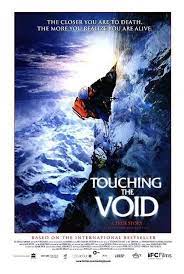 “Touching the Void” is a gripping and emotionally charged mountain climbing movie that recounts the harrowing true story of two mountaineers and their fight for survival in the unforgiving Peruvian Andes. Directed by Kevin Macdonald, the film takes viewers on a heart-stopping journey of endurance, resilience, and the indomitable human spirit.
“Touching the Void” is a gripping and emotionally charged mountain climbing movie that recounts the harrowing true story of two mountaineers and their fight for survival in the unforgiving Peruvian Andes. Directed by Kevin Macdonald, the film takes viewers on a heart-stopping journey of endurance, resilience, and the indomitable human spirit.
The movie introduces viewers to Joe Simpson and Simon Yates, two experienced climbers attempting to conquer the unclimbed West Face of Siula Grande. However, their expedition takes a tragic turn when Simpson suffers a devastating fall, leaving him with a broken leg and stranded in a treacherous crevasse. “Touching the Void” follows their extraordinary tale of survival against all odds.
The film captures the sheer physical and mental challenges faced by Simpson and Yates. It vividly portrays the isolation, bone-chilling cold, and relentless snowstorms that they encounter in the high-altitude environment. Through powerful storytelling and immersive cinematography, viewers are transported to the precarious edge where life and death hang in the balance.
“Touching the Void” delves into the intense psychological struggle of both climbers. It explores Simpson’s determination to stay alive despite overwhelming pain and hopelessness, as well as Yates’ guilt-ridden decision to cut the rope that connected them. The film poses profound questions about the lengths one would go to survive and the moral dilemmas faced in life-or-death situations.
The documentary also emphasizes the unbreakable bond between climbers and the inherent risks they face in pursuit of their passion. It showcases the deep trust and reliance between Simpson and Yates, as well as their unwavering loyalty and sacrifice for each other. “Touching the Void” pays homage to the unique camaraderie and spirit of mountaineering.
Moreover, “Touching the Void” offers breathtaking visuals of the Peruvian Andes, capturing the awe-inspiring beauty and brutal majesty of the mountains. It highlights the raw power and unpredictable nature of the natural world, serving as a stark reminder of the insignificance of human beings in the face of such forces.
In summary, “Touching the Void” is a riveting climbing movie that immerses viewers in the true story of survival, endurance, and the unbreakable human spirit. It captures the physical and psychological challenges faced by Simpson and Yates, and it prompts viewers to reflect on the fragility of life and the remarkable resilience that can emerge from the depths of despair.
Key Takeaways:
- “Touching the Void” recounts the true story of two climbers and their fight for survival in the Peruvian Andes.
- The film captures the physical challenges and extreme conditions encountered in the high-altitude environment.
- It explores the intense psychological struggle and moral dilemmas faced by the climbers.
- “Touching the Void” emphasizes the bond between climbers and the sacrifices made for each other.
- The documentary showcases the breathtaking beauty and unpredictable nature of the mountains.
- It inspires viewers to contemplate the limits of human endurance and the strength of the human spirit.
Rent or Buy “Touching the Void” via Prime Video
A Lonely Place to Die
 “A Lonely Place to Die” is a thrilling and suspenseful hiking movie that takes viewers on a heart-pounding adventure in the rugged Scottish Highlands. Directed by Julian Gilbey, the film follows a group of mountaineers who stumble upon a chilling discovery while embarking on a remote hiking expedition. It delves into the depths of human nature, survival instincts, and the relentless pursuit of justice.
“A Lonely Place to Die” is a thrilling and suspenseful hiking movie that takes viewers on a heart-pounding adventure in the rugged Scottish Highlands. Directed by Julian Gilbey, the film follows a group of mountaineers who stumble upon a chilling discovery while embarking on a remote hiking expedition. It delves into the depths of human nature, survival instincts, and the relentless pursuit of justice.
The movie introduces viewers to a group of experienced climbers who set out to conquer the challenging peaks of the Scottish Highlands. However, their adventure takes an unexpected turn when they discover a young girl trapped underground in a hidden chamber. As they race against time to rescue her, they become entangled in a dangerous web of kidnappers, betrayal, and a desperate fight for survival.
“A Lonely Place to Die” skillfully builds tension and suspense as the mountaineers navigate treacherous terrains, face unpredictable weather conditions, and encounter ruthless adversaries. The film captures the raw beauty and harshness of the Scottish wilderness, immersing viewers in the rugged landscapes that mirror the characters’ perilous journey.
The documentary explores the themes of trust, loyalty, and the lengths people are willing to go to protect the innocent. It examines the moral dilemmas faced by the mountaineers as they grapple with the choice between self-preservation and risking their lives to save a stranger. “A Lonely Place to Die” raises questions about the essence of humanity and the blurred boundaries between heroes and villains in extreme circumstances.
Moreover, “A Lonely Place to Die” highlights the resilience and resourcefulness of the human spirit in the face of adversity. The mountaineers must rely on their physical strength, mental fortitude, and strategic thinking to outwit their pursuers and survive the unforgiving wilderness. The film showcases the indomitable will to live and the capacity for ordinary individuals to rise above extraordinary challenges.
The movie also draws attention to the environmental beauty and vulnerability of the Scottish Highlands. It portrays the breathtaking landscapes, from towering cliffs to vast expanses of untouched wilderness. “A Lonely Place to Die” serves as a reminder of the importance of preserving and respecting these natural habitats for future generations to explore and enjoy.
In summary, “A Lonely Place to Die” is an exhilarating hiking movie that keeps viewers on the edge of their seats. It explores the depths of human nature, the fight for survival, and the moral complexities faced in extreme situations. The film reminds us of the resilience of the human spirit and the fragile beauty of our natural world.
Key Takeaways:
- “A Lonely Place to Die” follows a group of mountaineers who stumble upon a chilling discovery during a remote hiking expedition.
- The film captures the tension, suspense, and danger as the characters navigate treacherous terrains.
- It examines moral dilemmas, trust, and the essence of humanity in extreme circumstances.
- “A Lonely Place to Die” highlights the resilience and resourcefulness of the human spirit.
- The movie showcases the environmental beauty and vulnerability of the Scottish Highlands.
- It prompts viewers to reflect on the importance of preserving and respecting natural habitats.
Buy “A Lonely Place to Die” via Prime Video
180° South
 “180°South” is a captivating and inspiring hiking movie that combines adventure, environmental activism, and self-discovery. Directed by Chris Malloy, the film follows the journey of adventurer and environmentalist Jeff Johnson as he retraces the iconic 1968 road trip of his heroes, Yvon Chouinard and Doug Tompkins, to Patagonia. It weaves together breathtaking landscapes, introspective moments, and thought-provoking conversations about the importance of conservation and the pursuit of a meaningful life.
“180°South” is a captivating and inspiring hiking movie that combines adventure, environmental activism, and self-discovery. Directed by Chris Malloy, the film follows the journey of adventurer and environmentalist Jeff Johnson as he retraces the iconic 1968 road trip of his heroes, Yvon Chouinard and Doug Tompkins, to Patagonia. It weaves together breathtaking landscapes, introspective moments, and thought-provoking conversations about the importance of conservation and the pursuit of a meaningful life.
The movie introduces viewers to Jeff Johnson, a young man seeking purpose and connection with the natural world. Inspired by the pioneering spirit of Chouinard and Tompkins, founders of Patagonia and The North Face respectively, Johnson embarks on a soul-stirring journey from California to Patagonia. Along the way, he encounters fellow adventurers, locals, and environmental activists who share their wisdom and perspectives.
“180 Degrees South” immerses viewers in the awe-inspiring beauty of nature, showcasing stunning landscapes from the towering peaks of Patagonia to the untouched wilderness of the South Pacific islands. Through breathtaking cinematography, the film captures the grandeur and fragility of these natural environments, igniting a sense of wonder and reverence for the world around us.
The documentary explores themes of conservation, sustainability, and the impact of human activities on the planet. It highlights the importance of preserving our natural heritage for future generations and underscores the responsibility we all share in protecting the Earth. “180 Degrees South” serves as a call to action, inspiring viewers to take steps towards creating positive change in their own lives and in the world.
The film also delves into personal introspection and the pursuit of a meaningful life. As Johnson grapples with his own motivations and desires, he engages in thought-provoking conversations with environmentalists, surfers, and indigenous communities. These encounters lead him to question his own values and ignite a deeper understanding of the interconnectedness of nature, adventure, and the human spirit.
Moreover, “180 Degrees South” celebrates the spirit of adventure and the transformative power of embracing the unknown. It invites viewers to step out of their comfort zones, challenge themselves, and embark on their own journeys of self-discovery and exploration. The film encourages individuals to seek a life that is aligned with their passions, values, and a deep appreciation for the natural world.
In summary, “180 Degrees South” is an awe-inspiring hiking movie that combines adventure, environmental activism, and personal introspection. It captures the beauty of nature, explores the importance of conservation, and ignites a sense of purpose and connection with the world around us. The film serves as a reminder that every individual has the power to make a positive impact and create a life of adventure and meaning.
Key Takeaways:
- “180 Degrees South” follows adventurer Jeff Johnson as he retraces the road trip of his heroes to Patagonia.
- The film showcases the stunning landscapes and inspires reverence for nature.
- It explores themes of conservation, sustainability, and the responsibility we have towards the planet.
- “180 Degrees South” delves into personal introspection and the pursuit of a meaningful life.
- The documentary celebrates the spirit of adventure and encourages viewers to step out of their comfort zones.
- It serves as a call to action, inspiring individuals to make positive change in their own lives and in the world.
Rent or Buy “180 Degrees South” via Prime Video
14 Peaks: Nothing is Impossible
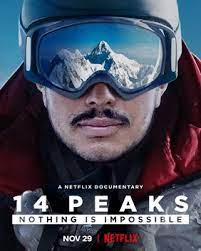 The final film on our list of mountain climbing movies is “14 Peaks: Nothing is Impossible.” “14 Peaks” is an awe-inspiring mountain climbing documentary that chronicles the remarkable journey of Nirmal “Nims” Purja, a former Gurkha soldier, as he sets out to conquer the world’s 14 highest mountains in a record-breaking time. Directed by Torquil Jones, the film captures the physical and mental challenges, triumphs, and sheer determination of Nims and his team as they push the boundaries of human endurance and achieve the seemingly impossible.
The final film on our list of mountain climbing movies is “14 Peaks: Nothing is Impossible.” “14 Peaks” is an awe-inspiring mountain climbing documentary that chronicles the remarkable journey of Nirmal “Nims” Purja, a former Gurkha soldier, as he sets out to conquer the world’s 14 highest mountains in a record-breaking time. Directed by Torquil Jones, the film captures the physical and mental challenges, triumphs, and sheer determination of Nims and his team as they push the boundaries of human endurance and achieve the seemingly impossible.
The movie introduces viewers to Nims Purja, a man with a passion for mountaineering and a relentless pursuit of breaking boundaries. Inspired by a desire to challenge himself and rewrite mountaineering history, Nims embarks on a mission to climb all 14 of the world’s highest peaks, known as the Eight-Thousanders, in just seven months. His audacious goal not only requires immense physical stamina but also demands meticulous planning, strategic decision-making, and unwavering resilience.
“14 Peaks: Nothing is Impossible” takes viewers on a thrilling and emotional journey as Nims and his team navigate treacherous terrains, extreme weather conditions, and altitude sickness. The film showcases the breathtaking beauty of the mountains, capturing the grandeur and majesty of these awe-inspiring landscapes. It immerses viewers in the intensity and exhilaration of high-altitude mountaineering.
Beyond the physical feats, the documentary delves into the mindset and psychology of Nims and his team. It explores the mental fortitude, discipline, and unwavering determination required to overcome the immense challenges they face. The film shines a light on the sacrifices, risks, and emotional toll that such endeavors can take, as well as the resilience and camaraderie that sustain them throughout their journey.
“14 Peaks: Nothing is Impossible” is not just a story of individual achievement but also a celebration of teamwork, collaboration, and the spirit of human solidarity. Nims and his team come from different nationalities, backgrounds, and mountaineering experiences, yet they unite with a common purpose. The film highlights the power of teamwork and the strength that comes from supporting and relying on one another.
Moreover, “14 Peaks: Nothing is Impossible” serves as an inspiration for viewers to pursue their dreams, overcome challenges, and push the boundaries of what they believe is possible. It encourages individuals to embrace a mindset of resilience, determination, and unwavering belief in their abilities. The film embodies the idea that with passion, dedication, and a relentless pursuit of one’s goals, nothing is truly impossible.
In summary, “14 Peaks: Nothing is Impossible” is a captivating hiking documentary that showcases the extraordinary journey of Nims Purja and his team as they conquer the world’s highest peaks. It captures the physical and mental challenges, the breathtaking landscapes, and the indomitable human spirit. The film serves as an inspiration for viewers to push their own limits, embrace resilience, and pursue their dreams with unwavering determination.
Key Takeaways:
- “14 Peaks: Nothing is Impossible” documents Nims Purja’s record-breaking journey to climb the world’s 14 highest peaks in seven months.
- The film captures the physical and mental challenges, triumphs, and resilience of Nims and his team.
- It showcases the breathtaking beauty of the mountains and the intensity of high-altitude mountaineering.
- The documentary explores the mindset, discipline, and unwavering determination required to overcome challenges.
- It highlights the power of teamwork, collaboration, and the spirit of human solidarity.
- “14 Peaks: Nothing is Impossible” inspires viewers to pursue their dreams, overcome challenges, and push their limits.
- The film embodies the idea that with passion, dedication, and belief in oneself, nothing is truly impossible.
Watch “14 Peaks: Nothing is Impossible” on Netflix
The Bottom Line
As we reach the summit of our exploration into the world of mountain climbing movies, we are left with a deep appreciation for the remarkable stories and extraordinary individuals depicted on the screen. These six mountain climbing movies have taken us on a rollercoaster of emotions, from the edge-of-your-seat thrills to the awe-inspiring beauty of nature’s grandeur.
Through the lens of these films, we have witnessed the triumph of the human spirit, the strength of camaraderie, and the resilience in the face of insurmountable challenges. We have come to understand that climbing is not merely a physical feat but a profound metaphor for life’s struggles and the relentless pursuit of personal growth.
These movies have showcased the power of breathtaking cinematography, transporting us to remote corners of the world and allowing us to witness firsthand the allure and dangers of mountaineering. From the jagged peaks of the Himalayas to the icy slopes of the Andes, we have experienced the vastness and unforgiving nature of our planet.
But beyond the adrenaline-fueled scenes and awe-inspiring vistas, these climbing films have left an indelible mark on our hearts. They have taught us the value of perseverance, the importance of teamwork, and the need for self-discovery. They have reminded us that true greatness lies not only in conquering mountains but also in conquering our own fears and limitations.
As we bid farewell to these films, let us carry their spirit with us, igniting our own sense of adventure and determination. Let us seek our own personal summits, whether they be literal or metaphorical, knowing that the journey itself is as significant as the destination.
So, fellow adventurers, let these mountain climbing movies inspire you to embrace challenges, embrace the unknown, and strive for greatness. Let them remind you that we are capable of achieving extraordinary things when we set our sights high and believe in our own abilities.
Thank you for joining us on this cinematic expedition, where we have witnessed the triumphs and tribulations of climbers who dared to defy gravity. May these mountain climbing movies continue to inspire generations to come, encouraging us to reach for the stars and conquer our own mountains, no matter how high they may seem.
Remember, the world is waiting, and the mountains are calling. Embrace the adventure, and may you always find yourself on top of the world.
Looking for even more films to add to your watchlist? Check out our list of the 15 hiking movies you must watch.
